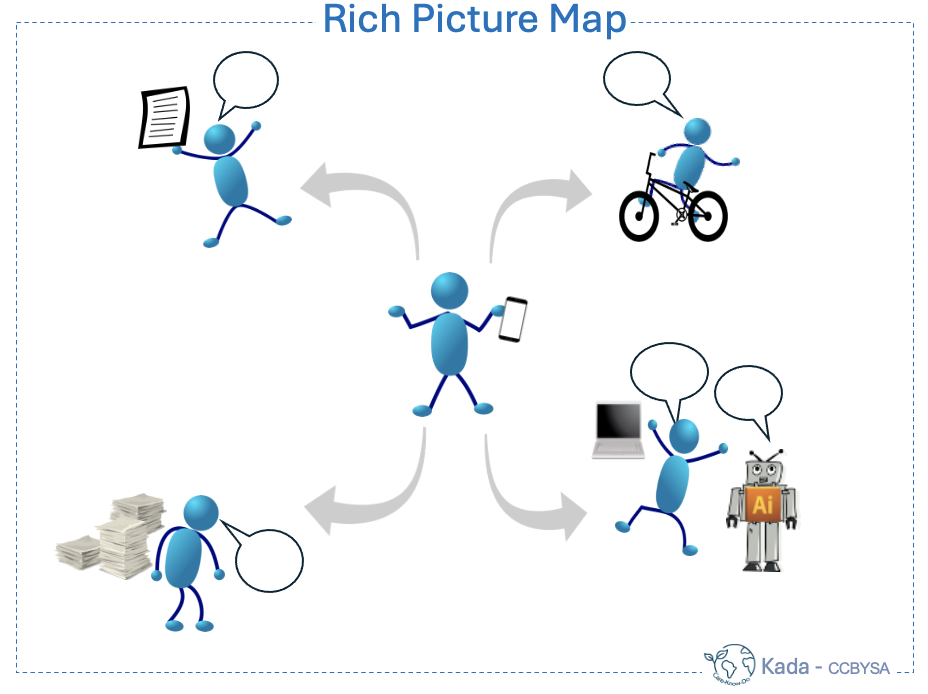Rich Picture Mapping is a knowledge cartography technique developed by Peter Checkland in the 1970s. Rich picture Maps can be used to represent complex situations and express ideas by combining images words or numbers and symbols. Rich Picture Mapping supports learners to visually articulate abstract concepts. It is useful for enhancing communication and shared understanding in problem-solving.

How can we create a Rich Picture Map?
- Identify the main elements and stakeholders in the situation.
- Sketch symbols and images to represent these elements.
- Connect the elements to show relationships and interactions.
- Include environmental and contextual factors.
- Use icons or caricatures to express issues and emotions.
- Reflect on the drawing to uncover insights and discuss with others.
Rich Picture Maps can help students to depict and discuss multifaceted problems in a shared context.
The application of Rich Picture Maps is ideal in system analysis, organizational studies, and educational settings.
Our studies about Rich Picture Maps using AI map application indicate improved collaborative dialogue and problem identification as one of the main advantages. Rich Picture Mapping has become a fundamental tool in systems thinking and soft systems methodology.